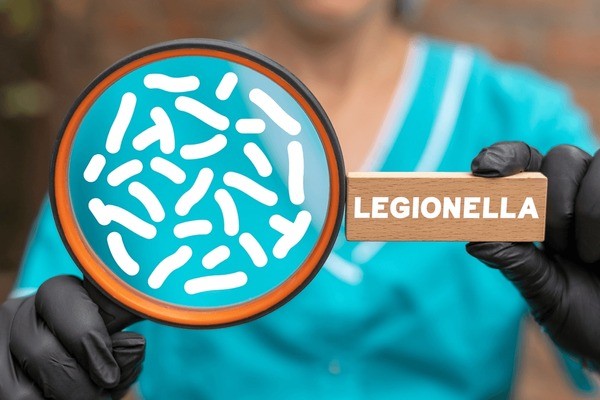What is Legionnaires’ Disease, and Who is Liable for Causing It?

Legionnaires’ disease is a type of pneumonia caused by Legionella bacteria that multiply in warm, stagnant water in a building’s water systems, including air conditioning cooling towers, hot tubs, and plumbing systems.
Inhalation of small droplets of bacteria-containing water can lead to a severe lung infection. Recently, we have seen outbreaks of Legionnaires’ disease resulting in national cases and related lawsuits.
Local, regional, and national cases and lawsuits of Legionnaires’ disease can demonstrate the hazards of poorly maintained, stagnant water systems and establish liability for legal responsibility. Let’s begin with the cause of Legionnaires’ disease.
What Causes Legionnaires’ Disease?
The Legionella bacteria are found naturally in freshwater but present a health concern when developed opportunistically and are understood to be localized in these artificial water systems.
These artificial water systems include air conditioning cooling towers, hot water tanks, ornamental fountains, and potable plumbing systems in commercial and residential buildings.
When the bacteria colonize a water system, the potential to infect susceptible people exists in the mist or vapor produced by a water system. The risk of transmission is increased in hospitals, hotels, nursing homes, and workplaces where water and sanitation are grossly inadequate.
People who are chronically ill, elderly, or have already compromised immune systems are at greatest risk of serious illness.
Who is Legally Responsible?
In cases of Legionnaires’ disease, liability typically falls on the property owners, facility managers, or maintenance companies who owned, managed, or maintained the water systems where the Legionella bacteria contaminated the water system.
Property owners (“defendants”) have a legal duty to properly maintain water systems in their buildings, and one that meets health and safety standards. Failure to do so can open residents, employees, visitors, and others up to legal claims of negligence.
To establish liability, victims or their attorneys will have to show:
- The defendant owned, managed, or controlled the property.
- The defendant was at fault for failing to properly maintain or monitor the water systems used in that property.
- That this failure caused exposure to the Legionella bacteria.
- That this exposure caused the illness directly.
Premises liability is most often the theory of tort used for recovery, but may also be product liability if defective equipment contributed, or professional negligence if professional contractor experts failed to meet their duty of care.
Preventing Legionnaires’ Disease
Property owners and managers are in the best position to prevent outbreaks of Legionnaires’ disease. Expected actions include regularly inspecting, cleaning, and disinfecting the water systems in their buildings.
Maintaining compliance with guidelines published by health authorities provides strong support for mitigating bacterial growth.
Key Takeaways
- Legionnaires’ disease presents significant health concerns when inhaling mist or vaporized droplets of contaminated water containing Legionella bacteria.
- Liability in Legionnaires’ disease is primarily with property owners/managers for failing to maintain safe water systems.
- Victims must demonstrate ownership, negligence, and causation to hold responsible parties accountable.
- Lawsuits seek damages for both positive financial loss and physical harm, e.g., lost wages because of illness.
- Safety standards and property maintenance are paramount, and the best service against the risk of Legionnaires’ disease.
